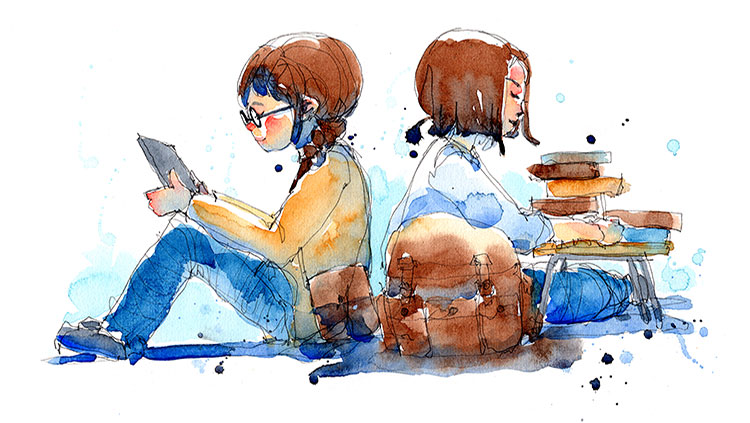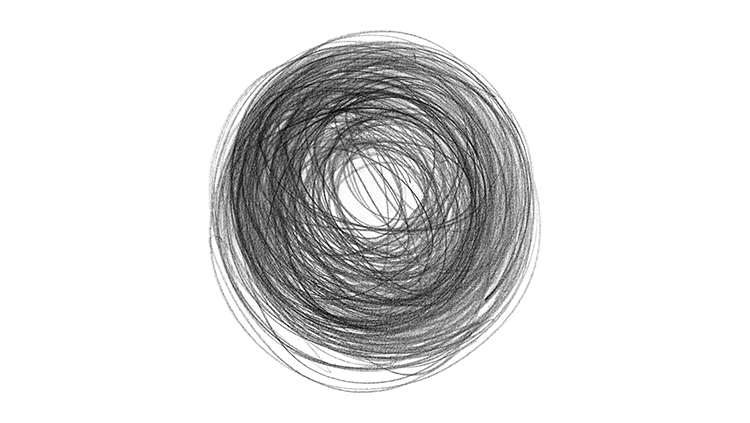Shaping of the Teenaged Brain
- Published30 Aug 2018
- Reviewed30 Aug 2018
- Source BrainFacts/SfN

Adolescent behavioral changes have long been thought to result from the hormones that develop during puberty. Those hormones, which enable adolescents to reproduce, create dramatic physical changes in teens and have given rise to the refrain of exasperated parents, “It’s hormones.”
But new research indicates adolescent behavior may not be driven exclusively by hormones and environmental and social factors such as stress and isolation play an important role in shaping behavior. The findings have important implications for understanding adolescent emotional development and the emergence of mental health disorders.
“People are starting to understand that adolescence is another sensitive time. Things like stress, social isolation and drug use can have big, long-lasting effects,” says Matthew Paul, a psychology professor at the University of Buffalo.
Puberty and adolescence are simultaneous events that correspond with major behavioral and hormonal changes. Adolescents develop complex thinking, become notorious risk-takers -- sometimes experimenting with drugs — and they shift the focus of their social relationships from family to peers.
Paul conducted an experiment with Siberian hamsters to try to disentangle adolescent behavioral changes triggered by puberty from those unrelated to puberty and its surge of hormones. He used Siberian hamsters because they experience puberty differently depending on when they are born. Siberian hamsters born at the start of a breeding season – when daylight is extensive – reach puberty at an early age so they can breed that year. Those born late in a breeding season – when there is much less daylight – experience a delay in puberty so they don’t breed in the winter.
“…we tend to think that pubertal hormones are responsible for the changes we see during adolescence. But our research suggests otherwise.”
Paul observed the hamsters to see when they underwent behavioral changes – specifically, when they made a transition from play to aggression. If puberty controlled behavioral changes, the two groups of hamsters would change their behavior at different ages; the precocious hamsters would become aggressive at a much younger age than their late-blooming counterparts.
But Paul found no such correlation. The two groups of hamsters shifted from play-fighting to exhibiting dominance at the same ages. The late-blooming hamsters became aggressive before they had reached puberty.
“This is a surprising finding, because we tend to think that pubertal hormones are responsible for the changes we see during adolescence. But our research suggests otherwise,” Paul told a writer for the University of Buffalo.
Because play is an important factor in social communication, Paul will investigate if chemicals in the brain cause the change in the hamsters’ behavior.
Deena Walker, a postdoctoral fellow at the Icahn School of Medicine at Mount Sinai in New York City, studied the increased risk-taking among adolescents to determine if the behavior was driven by the brain’s “reward circuitry.” The circuitry becomes volatile during adolescence and makes teenagers crave rewards while their inhibitions are underdeveloped. Increased risk-taking is important in adolescents’ development because it propels them to exploration and independence. Unfortunately, it also can lead to drug use and abuse.
In a literature review published in the Journal of Neuroscience, Walker noted sex differences in reward circuitry. Female adolescents are less extreme in “sensation seeking” than males and gain impulse control at an earlier age than males, who remain more impulsive through their mid-20s.This phenomenon has been observed in people and in lab animals during experiments with food intake.
Walker writes, adolescent reward circuitry is reorganized due to the influence of both pubertal hormones and social interactions. In an experiment in rats, adolescent animals placed greater value than adults on peer-directed activities and preferred social stimuli. The research suggests adolescent rodent brains are highly sensitive to social reward. Adolescent social experiences can be so powerful that they create permanent neural and hormonal changes. Adversity during adolescence increases the risk for adult psychiatric disorders including depression, anxiety, substance abuse and schizophrenia.
Written by Judy Gelman Myers and Thomas Frank
CONTENTPROVIDEDBY
BrainFacts/SfN
References
University at Buffalo, Arts and Humanities, Economics, Social Sciences, Social Work. (2018, March 19). Don’t blame adolescent social behavior on hormones [Press release]. Retrieved August 28, 2018, from http://www.buffalo.edu/news/releases/2018/03/026.html By Bert Gambini
Paul, M. J. (2018). Dissociation of Puberty and Adolescent Social Development in a Seasonally Breeding Species. Current Biology, 28(7), 1116-1123. doi: https://doi.org/10.1016/j.cub.2018.02.030
Walker, D. M. (2017). Adolescence and Reward: Making Sense of Neural and Behavioral Changes Amid the Chaos. Journal of Neuroscience, 37(45), 10855-10866. doi: https://doi.org/10.1523/JNEUROSCI.1834-17.2017

















